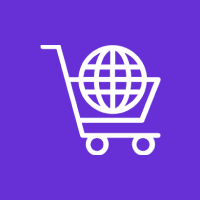OsCommerce is one of the more widely used eCommerce platforms for businesses that want to have flexibility and control over their online store and their eCommerce operations. Having a store alone will not help; you will have to have a good SEO strategy in place that will help drive traffic, improve search engine ranking, and bolster your sales.
Moreover, since there are millions of stores competing for attention, working on broad OsCommerce SEO implementation can mean the difference between a store that does not attract visitors and one that performs well. This guide will look at some high-effort, high-impact strategies—from technical optimizations to content marketing strategies that can take your store from good to great.
1. Optimize Product Pages
Product pages are the foundation of a successful eCommerce store, and optimizing your product will help ensure your products rank higher on search engines and entice potential buyers.
Actionable Steps:
- Create unique product titles that include the primary keyword.
- Write compelling meta descriptions that entice the potential click.
- Make high-resolution product images that have descriptive alt text (SEO) and for ADA compliance.
- Write detailed product descriptions that describe the features, benefits, and specifications of the product.
- Allow for customer reviews that will provide proof and interpersonal trust.
Benefit: Better search visibility, increased click-through rates, and improved conversions.
2. Optimize Your URLs for SEO
URLs are important for the purposes of SEO and user experience. Descriptive URLs containing keywords give search engines a clearer understanding of the content on your page.
For example:
- SEO-Friendly: www.yourstore.com/product/organic-green-tea
- Non-SEO-Friendly: www.yourstore.com/product?id=12345
Take Action:
- Keep URLs short, relevant, and contain keywords.
- Avoid using special characters or meaningless numbers.
Benefit to You: Better indexing by search engines, better customer trust and better search engine rankings.
3. Use Schema Markup
Schema markup also known as structured data allows search engines better understand your content, improving the appearance of your listings in search engine results pages (SERPs).
Take Action:
- Use product schema, including the price, availability, and ratings.
- Use breadcrumb schema to improve navigation and indexing.
- Use review schema or FAQ schema to get more rich snippets generated on your site.
Benefit to You: Having rich snippets can increase click-through rates and potentially bring more qualified traffic.
4. Enhance Website Speed
Website performance is an important ranking factor for SEO and directly affects user experience.
Actionable Steps:
- Optimize images and utilize next-gen formats like WebP.
- Enable caching, and use a Content Delivery Network (CDN).
- Minify your JavaScript, CSS and HTML files.
- Remove unused plugins or scripts that slow down your website.
Benefit: Lower loading times increase user satisfaction, decrease bounce rates, and increase conversions.
5. Mobile-Friendly Site
Mobile optimization is no longer optional, as over half of eCommerce traffic comes from mobile.
Actionable Steps:
- Use responsive themes that resize for all devices.
- Regularly test mobile usability using Google’s Mobile-Friendly Test.
- Optimize buttons, forms, and checkout for touch.
Benefit: Mobile-friendly websites rank higher on Google, and enhance user experience.
6. Internal Link Structure
Internal links provide guidance for both users and search engines, making navigation easier and spreading link authority amongst pages.
Actionable Steps:
- Internal link related products, categories, and blog topics.
- Use anchor text that is rich with keywords but flows naturally.
- Add a “related products” or “recommended for you” section to your product pages.
Benefit: Improves the structure of your website, increasing SEO placement and exits for users to visit more pages.
7. Activate SSL and Secure Checkout
Having security is incredibly important, for SEO and customer trust. HTTPS is a ranking signal on Google and assures visitors that their information is secure.
Action Steps:
Install an SSL certificate across your site.
- Ensure that all checkout pages and payment pages are encrypted.
- Add trust badges to enforce trust.
Benefit: Leads to a higher degree of trust, improved SEO signals, and increased likelihood of converting the sale.
8. Use Content Marketing
Content marketing is a powerful means of generating organic traffic, relevant backlinks, and improving SEO for longtail keywords.
Action Steps:
- Start a blog discussing tutorials, guides, or news relevant to your industry.
- Create guides to compare products, or lists for “best of.”
- Create short videos demonstrating the proper use of your products.
- Optimize all of the content with your keywords in a natural way, heading, etc.
Benefit: Attracts organic traffic, educational for the consumer, and increases the likelihood of conversion.
9. Optimize Category Pages
Category pages are common entry points for shoppers and have more potential to rank well for search terms that are a bit broader. Those category pages can be optimized for SEO, and will increase usability in sorting through products.
Action Steps:
- Use relevant headings for each category that include your keywords.
- Provide category descriptions that are simple and informative.
- Create product listings that are clear and organized. Don’t forget filtering and sorting.
Benefit: SEO improvement at the category or searchability level, while optimizing user experience toward the relevant products effectively.
10. Monitoring and Analyzing Performance
Continuously assessing SEO and user activity is vital to improving your plan.
Actionable Steps:
- Utilize Google Analytics to monitor traffic, user engagement, and conversions.
- Create a Google Search Console account to track indexing, query, and search performance.
- Discover your pages with the highest performance and copy their plan for other products.
- Continue to audit your site for broken links, duplicate content, and technical SEO.
Benefit: Paves the way for data driven decisions to advance your SEO and ROI.
11. Improve User Experience (UX) (Additional Strategy)
A clean UX can have a direct correlation with SEO and conversion.
Actionable Steps:
- Make menus and categories easy to navigate.
- Optimize checkout flow to reduce abandoned carts.
- Limit pop-ups in favor of helpful notifications.
- Improve accessibility for all users on your website.
Benefit: Increased user satisfaction and dwell time will drive the sale up.
12. Promote Reviews and User Generated Content (UGC) (Additional Strategy)
Customer reviews and UGC can build significant improvements in SEO and conversion.
Actionable Steps:
- Encourage customers to review product they purchase.
- Spotlight customer UGC photos or videos.
- Utilize reviews schema to display the social proof in search results.
Benefit: Builds trust, fresh content for SEO, and significant social proof.
Conclusion
Optimizing your OsCommerce store for SEO is a continuous process, combining technical improvements, content creation, and user experience enhancements. By implementing these strategies—from product page optimization and SEO-friendly URLs to mobile responsiveness and content marketing—you can:
- Increase organic traffic.
- Improve search engine rankings.
- Enhance user experience.
- Boost conversions and sales.
A well-optimized OsCommerce store doesn’t just attract visitors—it converts them into loyal customers, helping your business grow sustainably in the competitive eCommerce landscape.
Contact Us Today













 Database Development
Database Development












































